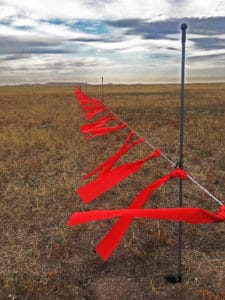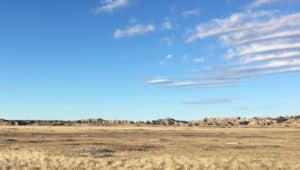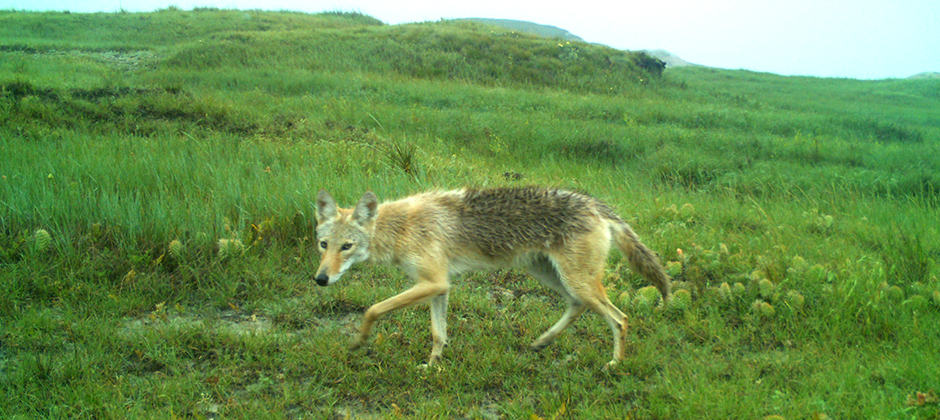Share this article
With some modifications, fladry can deter coyotes
Fladry is often used to keep wolves out of ranchlands. But researchers recently found this technique—stringing bright flags between fence posts—can be modified to keep coyotes out of sensitive wildlife areas, protecting endangered species.
“The reason fladry ends up being effective for canids in general is that that red flag ends up flapping in the winds,” said Rebecca Windell, a development director at Home Range Wildlife Research, a wildlife research nonprofit company.
Sometimes the flags alone are enough to scare away gray wolves (Canis lupus), which don’t like the unpredictable way the ribbons move as they flap around.

A fladry barrier flaps in the wind in South Dakota. Credit: Rebecca Windell
But electrifying the fladry can increase its effectiveness, particularly for coyotes (Canis latrans), which often find ways to fit through the hanging ribbons that discourage larger wolves.
As a master’s student at Colorado State University, Windell and her co-authors sought to adapt the fladry to better deter coyotes.
As they describe in a study published recently in Animal Conservation, the team electrified the fladry, and because coyotes are smaller than wolves, they narrowed the spacing of the flags. They took their system to the badlands of South Dakota and placed it around 8-hectare plots surrounding areas used by black-footed ferrets (Mustela nigripes). Coyotes prey on the ferrets, which are a federally endangered species.
Using trail cameras and occupancy models, the team watched how many coyotes appeared in and around the area before they put the fladry barrier around it. They then put up the fladry and watched again, while also monitoring a nearby area without a barrier, which they used for comparison.
After analyzing photos on their camera traps, the researchers found that the modified fladry effectively reduced coyote use by about 60% compared to the non-fenced area.

South Dakota’s badlands landscape hosts endangered ferrets and coyotes that prey on them. Credit: Rebecca Windell
The fladry may also have had an attractant effect, though. Snow tracks and camera images revealed that some coyotes came close to check out the barriers, so animals like ferrets that can move freely in and out of the exclosures might be susceptible to predation along the perimeter.
Managers can use this technique to keep coyotes out of a variety of areas, Windell said, including areas where endangered turtles and birds nest on the ground.
“It has broad application for both management and conservation purposes,” she said.
Header Image: Coyotes can pose a threat to endangered black-footed ferrets, but modified fladry kept the predators away. Credit: Rebecca Windell








